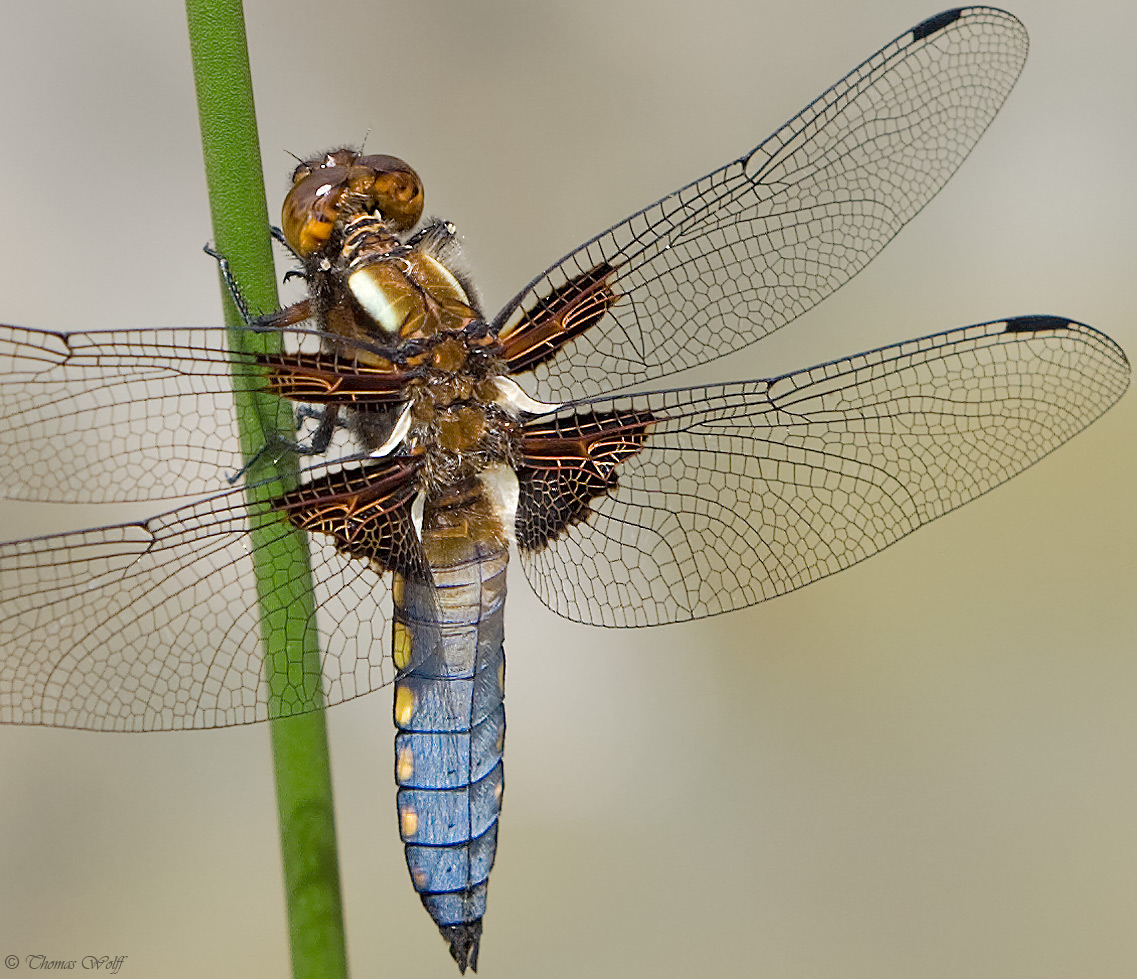
Whatever drove biologists to name such a beautiful insect like the broad-bodied chaser dragonfly "Libellula depressa"... well, so be it! Academics seem to naturally have developed a marked preference for incomprehensibility as stylistic form for contentual differentiation. We don't hold a grudge against them just because of this litte odd peculiarity, do we?
I shot this splendid specimen next to a small tarn in my own garden... and I was granted to observe him again circling around the tarn several dozens of times during the next weeks. Once it even landed on my knee.
About Libellula depressa:
This dragonfly species occurs throughout Europe and the Near East and prefers stagnant waters of all kinds, particularly small ponds. The broad-bodied chaser is one of the first dragonflies to appear at new garden ponds. If a branch extends over the pond, it is sure to become one of its favourite habitats for starting its hunting flights. Its flight time is from May to August.
The males of the species (see photo) grow to approx. 4 cm in length and have a striking broad body with yellow spots on the side. The pale blue loops consist of a waxy secretion which can be wiped off, similar to a plum or damson. By contrast, the female is pale brown in color. The broad-bodied chaser attacks its prey from below and grasps it with the legs extended like a collecting basket. Like most large dragonflies, it consumes its prey while still in flight.
Dafins, Austria. Mai 2008.
Canon EOS 10D, Canon EF 70-200mm f 2.8L IS USM @ 155 mm, ISO 100, f 1:8.0, 1/250 s.